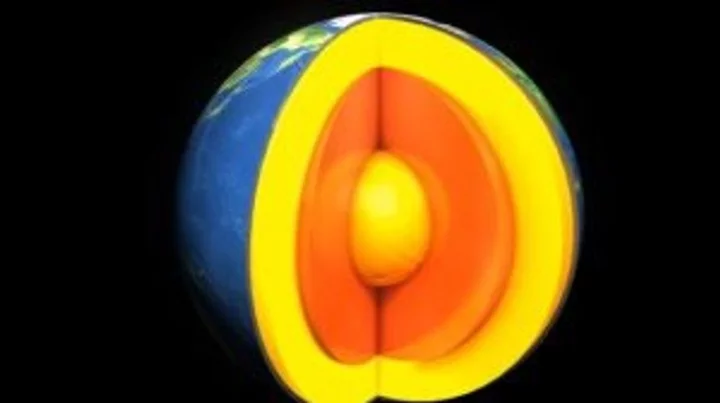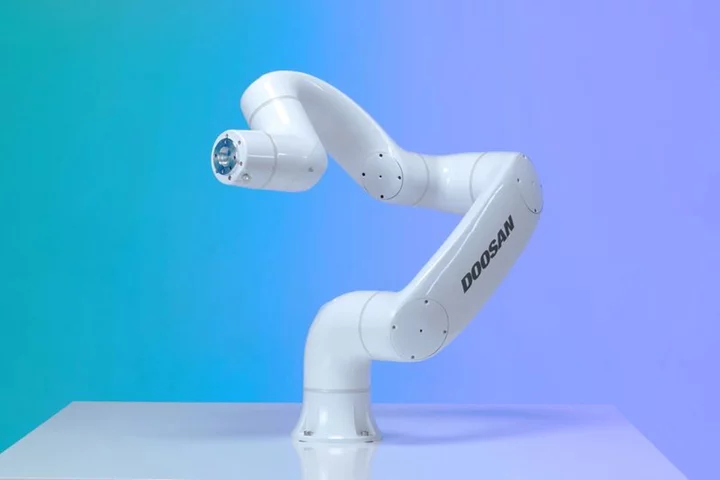
Monstrous 'zombie worms' devour alligator in jaw-dropping experiment
A warning to readers who don’t have a fear of the deep ocean: this story might soon change that. Back in 2019, a group of researchers who wanted to stir excitement down in the murky recesses of the sea conducted a unique experiment. The team, from the Louisiana Universities Marine Consortium (LUMCON), dropped three dead alligators 6,560 feet (2,000 metres) down into the Gulf of Mexico to see how deep-dwelling creatures would react to an uncommon food source. Initially, the scientists thought that the tough hide of the reptiles would put scavengers off, because it would make it hard for them to reach the more desirable soft flesh. However, this swiftly proved to be far from the case. Within a day, nine large isopods (Bathynomus giganteus) were observed feasting on the first carcass, eventually penetrating its hide and eating their meal from the inside out – imagine a crew of foot-long, pink woodlice crawling all over a gator and you get the picture. The second croc, dropped around 100km away, was almost totally devoured in just 51 days – leaving behind nothing more than its skull, spine, and the rope and weight that were used to anchor it to the sea floor. The scant leftovers became a source of great excitement to the researchers when they noticed it had been targeted by a brand new species of bone-eating worm. They concluded that it appeared to be a member of the Osedax family – commonly known as "zombie worms" because they suck away at, and live off, the bones of the dead – which had never been seen around Mexico before. Testing revealed that its nearest identifiable relatives are native to Antarctica and California, therefore making it an “undescribed species”. The investigators wrote in a paper about their discovery, which was published in the journal PLOS, that the creature “will be named in due course”. So, what happened to the third alligator? Well, that part is a mystery, because within eight days of its drop-off at its 1,996-metre-deep observation spot, it had disappeared. The researchers noted that although the body had vanished, the 20.4kg anchor, shackle and rope used to weigh the animal down were found 8.3 metres away – suggesting they had been “dragged” there. The experts concluded that a “large scavenger” had most likely snapped up the reptile. And given the depth at which it had been left, and the “implied body size necessary to both consume a moderately-sized alligator and move a large weight” it was probably a large shark. Clearly, whatever the beast was, it didn’t feel like sharing its dinner with a bunch of greedy worms. Sign up for our free Indy100 weekly newsletter Have your say in our news democracy. Click the upvote icon at the top of the page to help raise this article through the indy100 rankings.
2023-10-05 21:58

Lucid launches cheaper Air Pure electric sedan to revive demand
(Reuters) -Luxury electric-vehicle maker Lucid Group on Thursday launched a cheaper, rear-wheel drive version of the Air Pure sedan starting
2023-10-05 21:19

Scientists make creepy discovery about ancient cannibal rituals
A stark new discovery has revealed that cannibalism was a common practice in Europe to commemorate the dead 15,000 years ago. Research from London’s Natural History Museum (NHM) found human remains at a famed Paleolithic site in Cheddar Gorge that appeared to have bite marks across 100 of the bones. Scientists believe this is sufficient evidence of cannibalism in the Magdalenian group. "We interpret the archaeological evidence that cannibalism was practised on multiple occasions across northwest Europe over a short period of time as an indication that such behaviour was part of a funerary behaviour among Magdalenian groups, and not simply practised out of necessity," Dr Silvia Bello, paleoanthropologist and principal researcher said in a statement. Postdoctoral researcher William Marsh went on to say that the study contextualised the area by reviewing all sites "attributed to the Magdalenian culture." "During the terminal time period of the Palaeolithic, you actually see a turnover in both genetic ancestry and funerary behaviour, indicative of population replacement as Epigravettian groups migrated northwards," he said, as per IFL Science. "We believe that the change in funerary behaviour identified here is an example of demic diffusion where essentially one population comes in and replaces another population and that brings about a change in behaviour." Fast forward to 2023, and now people are having their bodies frozen in hopes they can "wake up" in the future. Cryonics "is the practice of preserving humans and animals at cryogenic temperatures in the hope that future science can restore them to a healthy living condition as well as rejuvenate them," according to the National Library of Medicine. "At present cryonics can only be performed after pronouncement of legal death of the cryonics subject." Sign up for our free Indy100 weekly newsletter Have your say in our news democracy. Click the upvote icon at the top of the page to help raise this article through the indy100 rankings.
2023-10-05 21:18

FTX customers are still grappling with crypto platform's collapse
By Elizabeth Howcroft and Medha Singh LONDON For Lee Rees, 43, FTX was one of a handful of
2023-10-05 20:51

Scientists shed surprising new light on the Earth's 'butter-like' inner core
For centuries we’ve been told that the Moon is made of cheese but now, it turns out, the Earth is more like butter. Or, at least, its inner core is. A new study led by experts at the University of Texas (UT) and collaborators in China found that iron atoms at the very centre of our world move around much more than previously thought, and the implications could be huge. Scientists have long sought to dissect the insides of our planet but it isn’t easy, given that we have no way of directly exploring its core. The deepest hole humans have ever dug – branded the "entrance to hell" – extended an impressive 12,263m (40,230ft) down, but even that doesn’t come close to breaking through the crust to the layers beneath. Still, thanks to techniques like seismic tomography – which analyses how waves of energy travel through different materials during earthquakes – we’ve been able to map out the world’s interior. Now, researchers have used lab experiments and AI algorithms to shed a striking new light on the heart of the planet. "Seismologists have found that the centre of the Earth, called the inner core, is surprisingly soft, kind of like how butter is soft in your kitchen," Youjun Zhang, a Sichuan University professor who co-led the investigation, said in a statement shared with Phys.org. "The big discovery that we've found is that solid iron becomes surprisingly soft deep inside the Earth because its atoms can move much more than we ever imagined. This increased movement makes the inner core less rigid, weaker against shear forces." The findings are significant because they could help explain the role that the inner core plays in generating the world’s magnetic field. They could also help us understand a number of the inner core’s key properties, which have long flummoxed experts. "Now, we know about the fundamental mechanism that will help us with understanding the dynamic processes and evolution of the Earth's inner core," Jung-Fu Lin, one of the study's lead authors, explained. Given that it is impossible for scientists to directly extract specimens from the inner core, Lin and his colleagues recreated it in miniature. They took a small iron plate, shot it with a fast-moving projectile, and collected the resulting temperature, pressure and velocity data, which they then fed into an AI computer model. Using this machine learning system, they were able to scale up the sample iron atoms configuration to mimic the atomic environment within the inner core. At this beefed-up scale, the researchers observed groups of atoms moving about while still maintaining their overall structure. Inner Core iron atom motion model University of Texas This movement could explain why seismic measurements of the inner core reveal an environment that's softer and more malleable than would be expected at such pressures, Prof Zhang explained. Around half of the energy that goes into generating the Earth's magnetic field can be attributed to the inner core, with the rest coming from the outer core, according to the UT team. Thanks to Zhang, Lin and their colleagues, we now have a clearer understanding of the inner core’s machinations at an atomic level, which could help inform how energy and heat are generated at the heart of the planet. This could also shed light on how the inner and outer core work together to generate the Earth’s magnetic field – a key ingredient in making a planet habitable. Sign up for our free Indy100 weekly newsletter Have your say in our news democracy. Click the upvote icon at the top of the page to help raise this article through the indy100 rankings.
2023-10-05 19:22

Facebook’s new AI sticker tool generates ‘completely unhinged’ images
Facebook users have shared images of cartoon characters wielding weapons, naked celebrities, and child soldiers – all created using the app’s new AI-generated sticker feature. Parent company Meta unveiled the new feature last week, allowing Facebook, Instagram, Messenger and Instagram users to generate stickers with artificial intelligence by writing prompts. “I don’t think anyone involved has thought anything through,” 3D artist and illustrator Pier-Olivier Desbiens wrote on X, formerly known as Twitter, who used the tool to create stickers with the prompts ‘Waluigi rifle’, ‘child soldier’, ‘Karl Marx large breasts’ and ‘Trudeau buttocks’. “We really do live in the stupidest future imaginable,” he wrote. Another user shared an AI-generated sticker of conspiracy theorist Alex Jones kissing a dog. “It’s completely unhinged,” they wrote. The Independent has reached out to Meta for comment. The new AI stickers are currently only available to a limited number of English-language users, with Meta yet to confirm whether a wider roll out is planned. “Using technology from Llama 2 and our foundational model for image generation called Emu, our AI tool turns your text prompts into multiple unique, high-quality stickers in seconds,” Meta announced in a blog post last week. “This new feature... provides infinitely more options to convey how you’re feeling at any moment.” Meta claims that billions of stickers are sent by Facebook, Instagram, Messenger and WhatsApp users each month, having first introduced the feature in 2013. Other AI-generated image tools, such as OpenAI’s DALL-E 3, have limits in place to prevent misuse. Users are unable to generate images featuring violent content or real people, though other generative AI platforms exist that do not place limitations on the ways content can be generated. In its blog post announcing the new feature, Meta noted that there was a chance that AI tools could be misused, which is why their introduction is being done on a “step by step” basis. “In keeping with our commitment to responsible AI, we also stress test our products to improve safety performance and regularly collaborate with policymakers, experts in academia and civil society, and others in our industry to advance the responsible use of this technology,” the post stated. “We’ll continue to iterate on and improve these features as the technologies evolve and we see how people use them in their daily lives.” Read More Pixel 8: Google unveils ‘AI-centred’ iPhone rival Facebook and Instagram users face monthly fee for ad-free version Zuckerberg says Metaverse can bring back the dead – virtually Meta just took a step towards its dream of the metaverse
2023-10-05 18:51

Microsoft, Amazon facing UK antitrust probe over cloud services
Microsoft and Amazon could be in hot water over apparently making it difficult for UK customers to use multiple suppliers of vital cloud services.
2023-10-05 18:45

Belgian intelligence service scrutinising Alibaba's presence at Liege airport
(Reuters) -Belgian officials are looking into risks around the presence of China's Alibaba Group Holding at a cargo airport in
2023-10-05 18:19

Foxconn expects strong holiday sales in Q4, Sept sales slump
By Ben Blanchard and Sarah Wu TAIPEI Taiwan's Foxconn, the world's largest contract electronics maker and a major
2023-10-05 16:48

Scientists believe vegetarianism could be in your DNA
Vegetarianism may be written in your DNA, a study has found. According to new research which analysed 5000 vegetarians and 300,000 meat eaters, there are genes associated with how well someone is able to adhere to a vegetarian lifestyle. Researchers identified three genes that are strongly identified and another 31 that are potentially identified with vegetarianism. In a genetic analysis, the researchers saw that vegetarians are more likely than non-vegetarians to have different variations of these genes. This might be because of how different people process lipids, or fats. Several of the genes that the study found to be associated with vegetarianism had to do with metabolising lipids and given plants and meat differ in the complexity of their lipids, it may be that some people genetically need some lipids offered by meat. “At this time we can say is that genetics plays a significant role in vegetarianism and that some people may be genetically better suited for a vegetarian diet than others,” said lead study author Dr. Nabeel Yaseen, professor emeritus of pathology at Northwestern University’s Feinberg School of Medicine. “A large proportion of self-described vegetarians actually report consuming meat products when responding to detailed questionnaires,” he said. “This suggests that many people who would like to be vegetarian are not able to do so, and our data suggest that genetics is at least part of the reason.” Sign up to our free Indy100 weekly newsletter Have your say in our news democracy. Click the upvote icon at the top of the page to help raise this article through the indy100 rankings.
2023-10-05 16:22

UK regulator asks for antitrust probe into Amazon, Microsoft cloud dominance
LONDON (Reuters) -Britain's media regulator on Thursday asked the country's antitrust authority to investigate U.S. tech giants Amazon and Microsoft's
2023-10-05 15:20

South Korea's Doosan Robotics shares jump in trading debut
By Joyce Lee SEOUL (Reuters) -Shares in South Korea's Doosan Robotics soared above their initial public offering (IPO) price in
2023-10-05 08:24
